Spring is in the air and so we are highlighting the striking Art Deco statuette of Persephone, which was designed by Richard Garbe for Royal Doulton. In the words of Doulton’s 1933 brochure: “The grace of Persephone as Richard Garbe originally called this ethereal “Spring” whose feet have just kissed earth after her journey from the kingdom of Pluto.”
Richard Louis Garbe RA (1876-1957) was one of the most talented British sculptors of the Art Deco era and WMODA has a fine collection of his work for Royal Doulton. Garbe worked with the Doulton factories in Lambeth and Stoke-on-Trent between 1933 and 1939 and designed sculptures for limited reproduction in salt-glazed stoneware and porcelain. The first limited edition figures in Doulton’s famous HN series were based on ivory and bronze sculptures exhibited by Garbe at the Royal Academy in London.
Garbe was a pupil of the Central School of Arts and Crafts when it first opened in 1896 and he returned to teach there for many years. He was appointed Head of Sculpture at the Royal College of Art in 1926 and was a professor there for 20 years. In his early career, Garbe distinguished himself as an architectural sculptor with monumental stone carvings, notably for the façade of the National Museum of Wales in Cardiff in 1914. He also helped revive the use of exotic materials in British sculpture including ivory carving, which he learned while apprenticed to his father, a Prussian immigrant carver.
Primavera, his monumental ivory masterpiece depicting the coming of spring, is in the Victoria & Albert Museum in London. The central ivory statue of Flora, the Greek goddess of flowers, inspired Royal Doulton’s Spring HN1774 which was issued as a limited edition of 100 figures in 1933.
Royal Doulton developed a special matte glaze ivory porcelain body for Garbe’s sculptures, which had a luminous glaze resembling marble, The soft velvety finish can be seen in the unrecorded bust derived from the figure of Spring which is in the WMODA collection. In 1937, Spring was also offered in a hand-painted glazed version wearing a pale green dress and carrying golden flowers as HN1827. Most of the colored figurines designed by Garbe were offered as electric lamps but few have survived intact.
Richard Garbe’s second Royal Doulton figure, the seductive Salome HN1775, was probably inspired by the first London stage performance of Oscar Wilde’s play in 1931, which had been banned in the UK since its original publication in 1893. The Macaw HN1779, which also depicts a sensual kneeling woman, was shown by Royal Doulton at the Art in Industry exhibition of 1935 to celebrate their relationship with this distinguished sculptor. Royal Doulton also printed a stylish illustrated brochure of Garbe’s work to promote their first limited editions.
Recently this rare photograph of Richard Garbe came to light showing him with his sculpture of Dryad of the Pines and part of his monumental Spirit of the Wind. The photo is dated April 24, 1936 and was taken when Garbe was elected as a Royal Academician. Royal Doulton later produced an ivory porcelain version of Garbe’s Dryad tree nymph as HN1869 in 1938.
Like many of his contemporaries, Richard Garbe favored subjects from classical mythology. His Spirit of the Wind HN1777 features a wind-swept Greek goddess in diaphanous robes, which was made in matte ivory and tinted glazes. His impressive sculpture of the West Wind HN1776 depicts the Greek god Zephyr, the gentlest of the four winds which heralds spring. In classical mythology he is linked with Flora the goddess of flowers and Iris, the goddess of rainbows. West Wind was introduced in a limited edition of 25 pieces in 1933 but it is doubtful the complete edition was produced given the handful of pieces which are known.
Not only were Garbe’s Royal Doulton figures limited in production, many are also tall and slender like Spring making them prone to damage over the years. Only a handful have survived around the world so WMODA is very fortunate to have the rare Lady of the Snows HN1780, The Cloud HN1831 and Lady of the Rose, which was not recorded in the HN series. Most of the pieces in the WMODA collection were formerly exhibited at the Sir Henry Doulton Gallery in England before it closed.
One of the rarest acquisitions from the Royal Doulton archives was the unique white Lambeth stoneware flask depicting Endymion and Aurora. According to Pliny the Elder, Endymion was the first person to observe the movements of the moon. In Greek mythology, this handsome astronomer was the lover of Selene the moon, who is portrayed arousing him from his slumbers on one side of the flask. The other side features Aurora, goddess of the dawn, who announces the arrival of the sun each day.
For Doulton’s Lambeth studio in London, Richard Garbe also produced some salt-glazed stoneware figures of nymphs, nereids and animal models. The 1982 issue of the Doulton Review house magazine has a cover shot of Garbe’s impressive jardinière and stand featuring Diana, the huntress, which was shown in a garden setting at the 1935 Art in Industry exhibition. This was formerly in the Doulton family’s collection along with a Doulton stoneware garden sculpture of a Sea Lion, which was also shown in the 1935 exhibition. Garbe derived the Doulton Sea Lion from his 1929 green marble statue now at the Tate Gallery in London. A smaller Lambeth stoneware version of the Sea Lion is displayed at WMODA, The Tate gallery also owns an Irish limestone sculpture of a Drake which was purchased from the artist in 1925 and was later reproduced by Doulton.
Garbe also modeled masks which were a popular form of wall decoration in the Art Deco era. His study of Lachesis from 1923 was inspired by one of the three fates in Greek religion who determines the destiny or thread of life. The Royal Doulton masks of Fate in green and gold glazes at WMODA were based on Garbe’s bronze original. Doulton also produced masks of Agnes and the Lion of the East but these are not in the Wiener collection.
One of the most spectacular sculptures in the Art Deco gallery at WMODA is the bust of the composer Ludwig van Beethoven, which was reproduced in terracotta at Doulton’s Lambeth factory and ivory porcelain at the Burslem factory. Garbe’s original sculpture was exhibited at the Royal Academy in 1931 and Beethoven HN1778 was produced in a limited edition of 25 in 1933. It is not known how many terracotta versions were made. The attendant figures emerging from the clay suggest The Creatures of Prometheus, Beethoven’s only full-length ballet which he wrote in 1801. This allegorical ballet is based on the Greek myth of the Titan Prometheus who stole fire from Zeus in order to create mankind from clay.
Garbe was at the zenith of his career when he worked with Royal Doulton. He was elected as a Royal Academician in 1936 and became Master of the Art Workers Guild in 1938. He was also a member of the Royal Society of British Sculptors and an associate of The Guild of Art Craftsmen. His last ceramic commission was from Wedgwood at the outset of World War Two but presumably work was interrupted as only two figures exist in Queens ware, Syren and a Boy on Shell. Examples of these are in Arthur Wiener’s private collection in New York.
Read more...

Royal Doulton Spring also known as Persephone
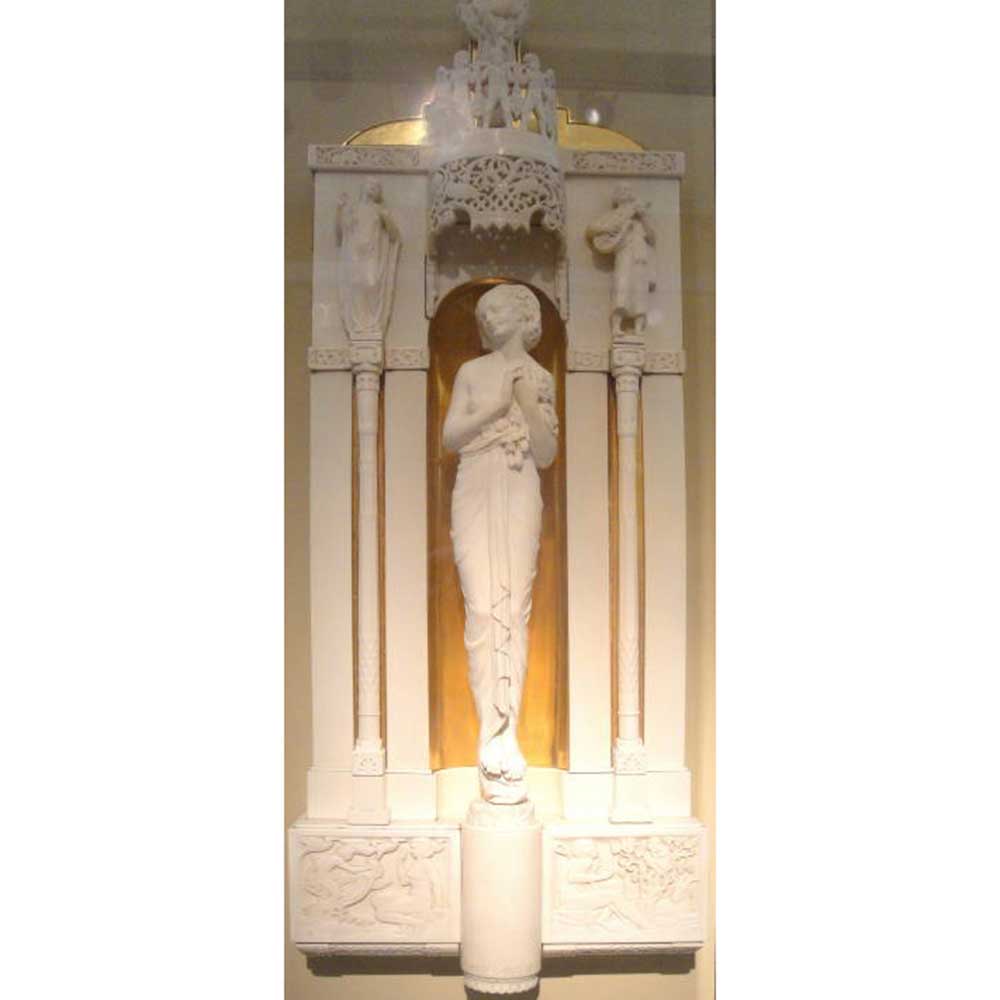
Primavera at the V & A

Royal Doulton Spring Bust
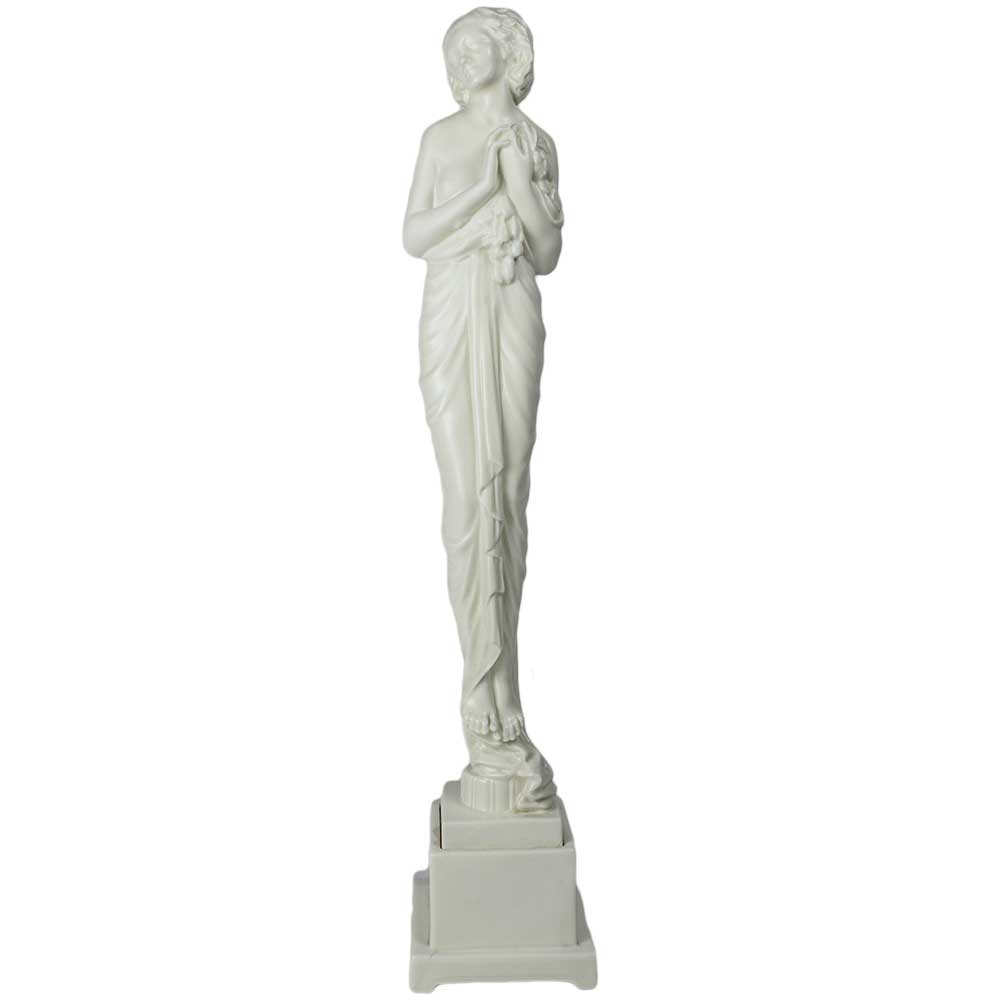
Royal Doulton Spring

Royal Doulton Salome
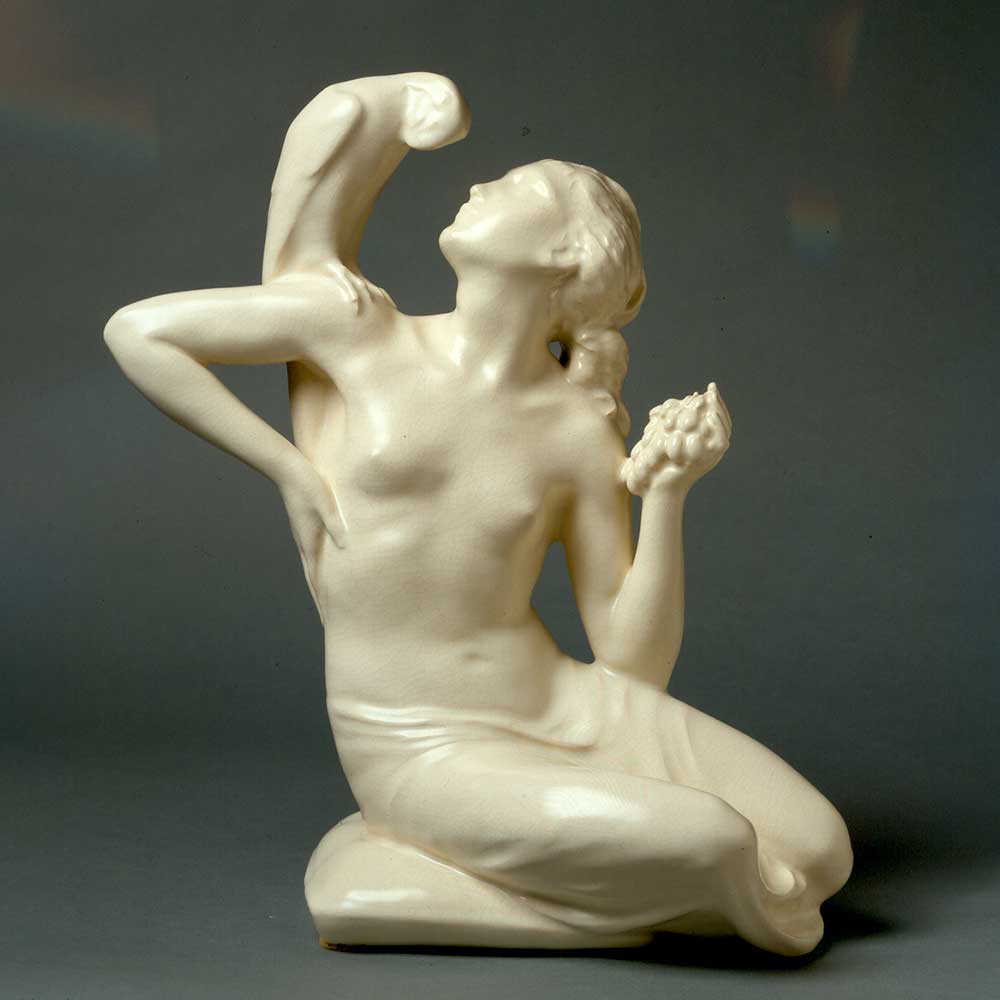
Royal Doulton Macaw
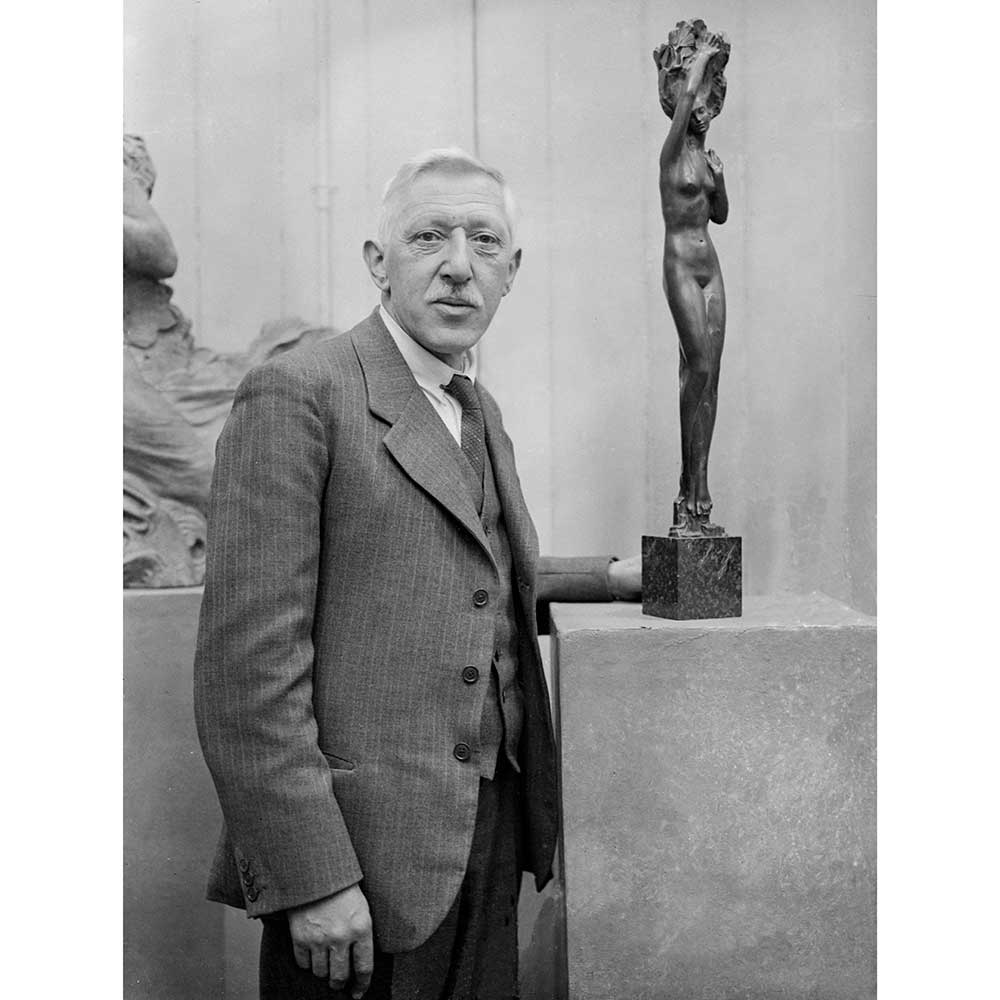
Richard Garbe with Dryad of the Pines
Photo courtesy of Topfoto
Royal Doulton Dryad of the Pines

Royal Doulton Spirit of the Wind
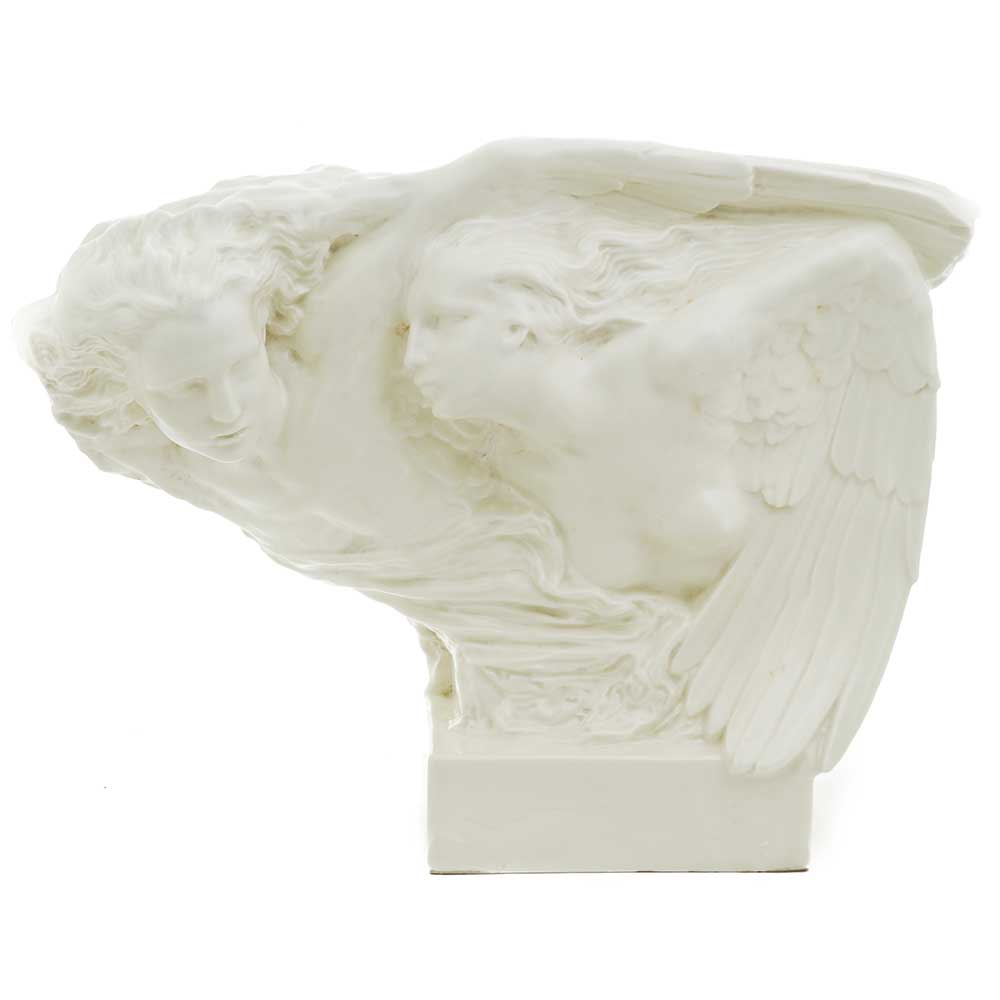
Royal Doulton West Wind

Royal Doulton Lady of the Snows
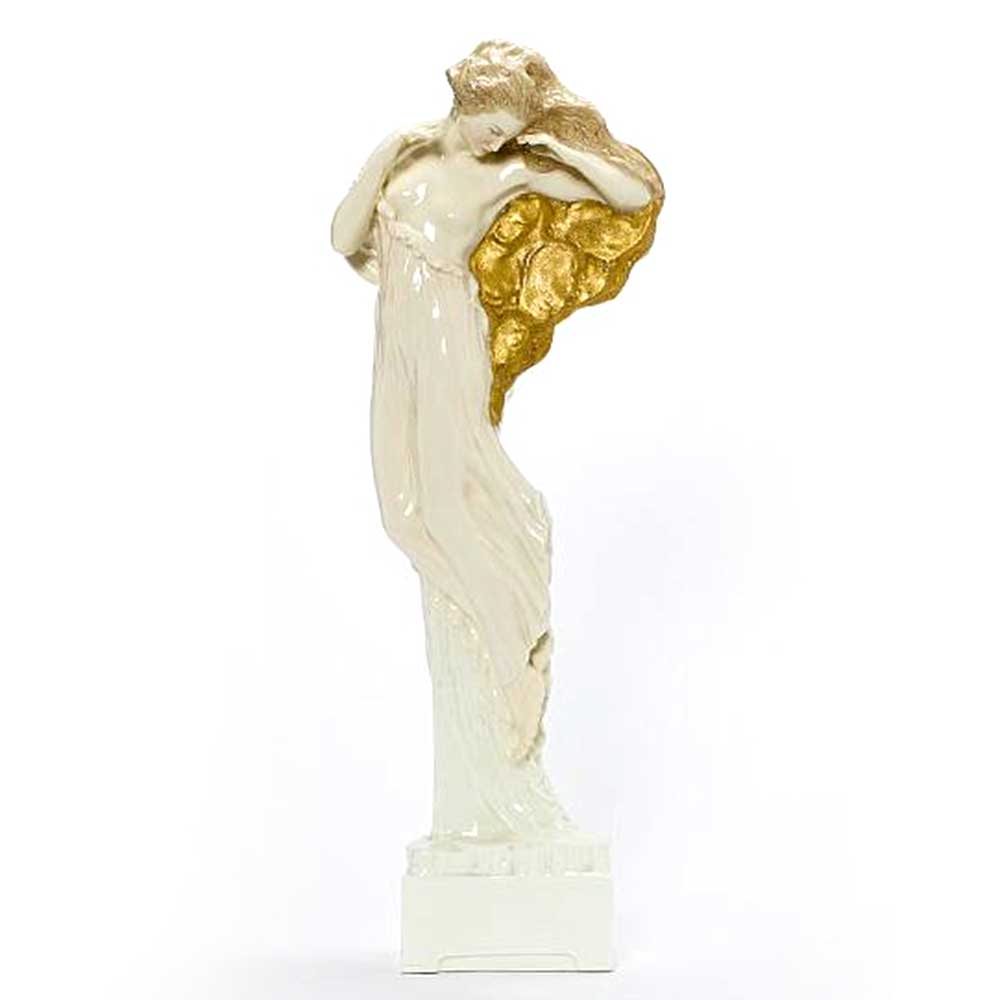
Royal Doulton The Cloud

Royal Doulton The Lady of the Rose
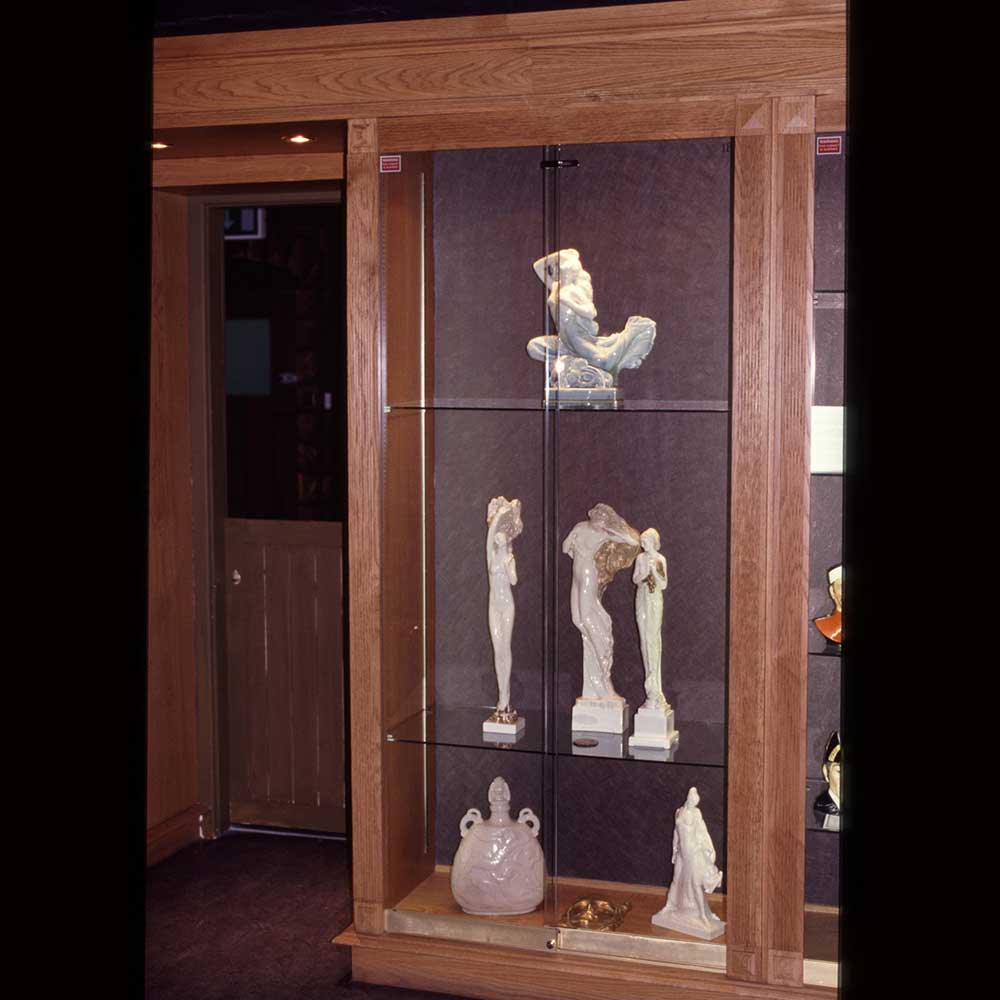
The collection at The Sir Henry Doulton Gallery

Garbe Catalog

Royal Doulton Endymion and Aurora Flask
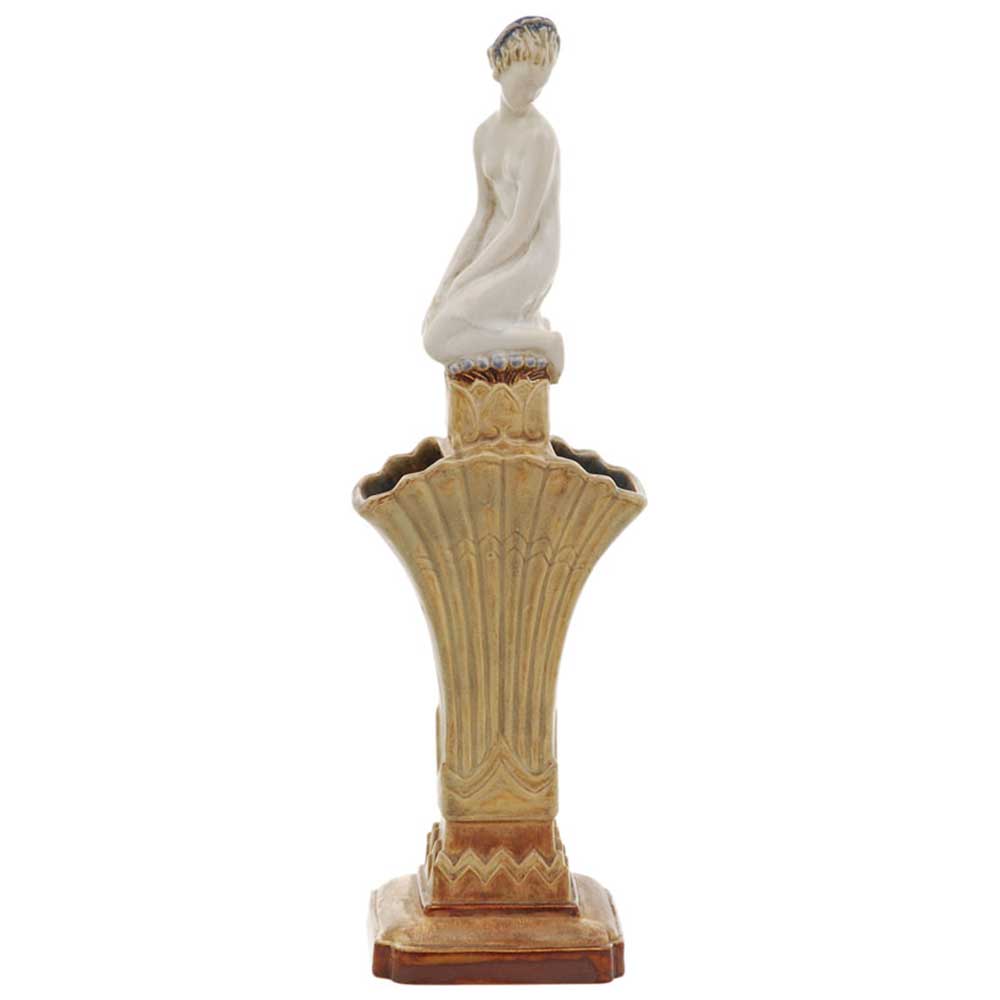
Doulton Lambeth Nymph
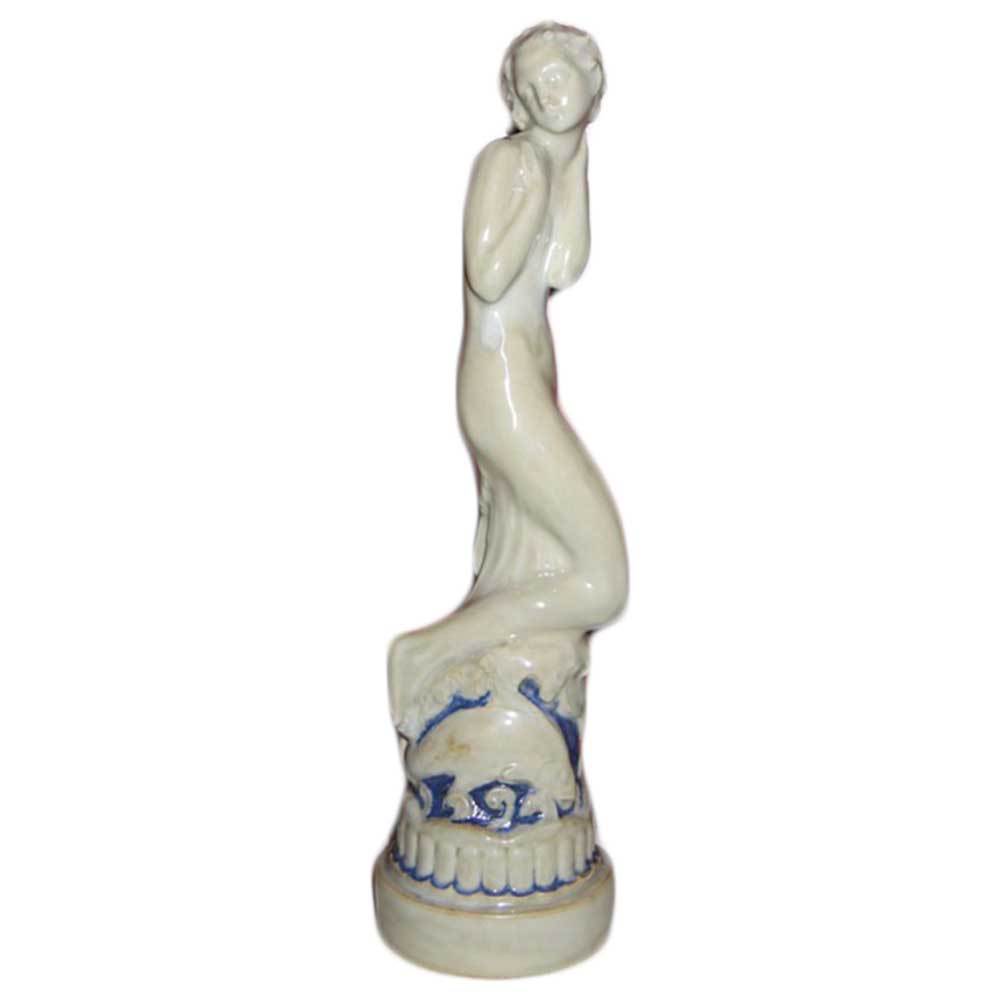
Doulton Lambeth Nereid Water Sprite

Nereid Water Sprite
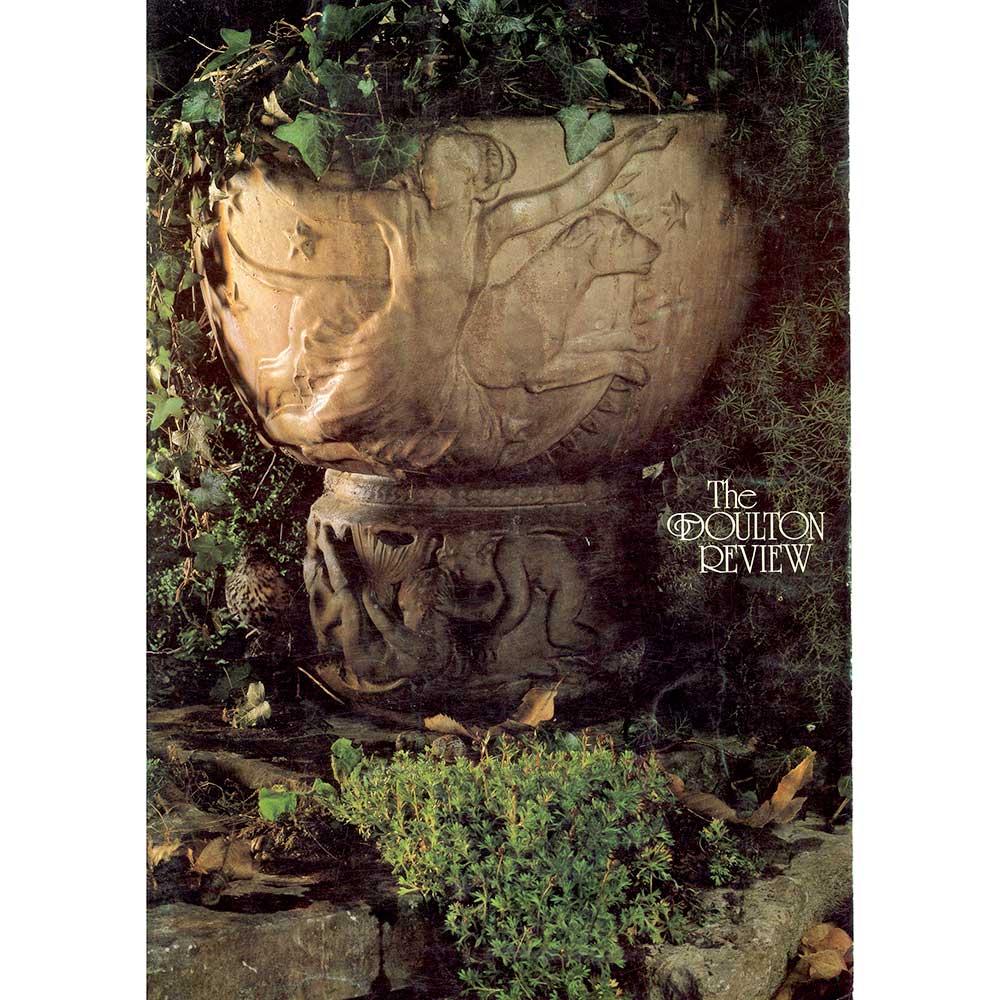
Doulton Review featuring Diana Jardinière
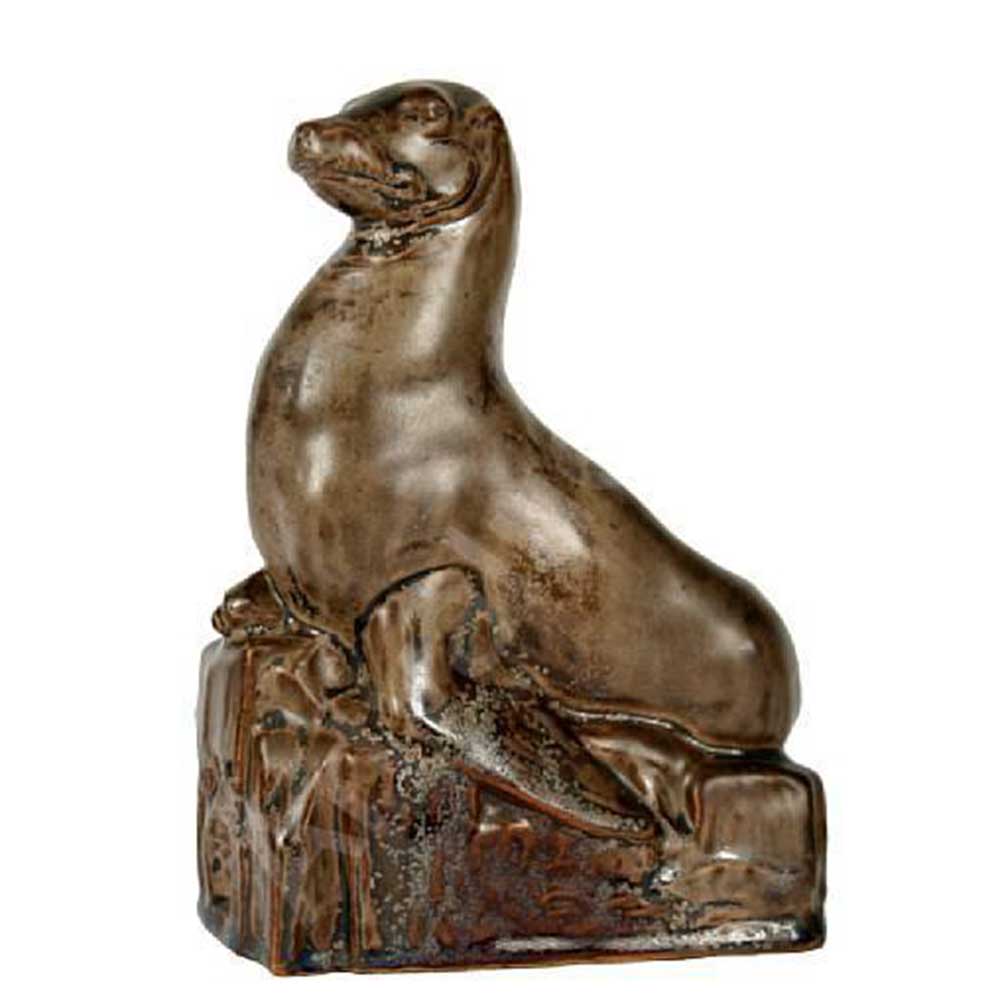
Doulton Lambeth Sea Lion
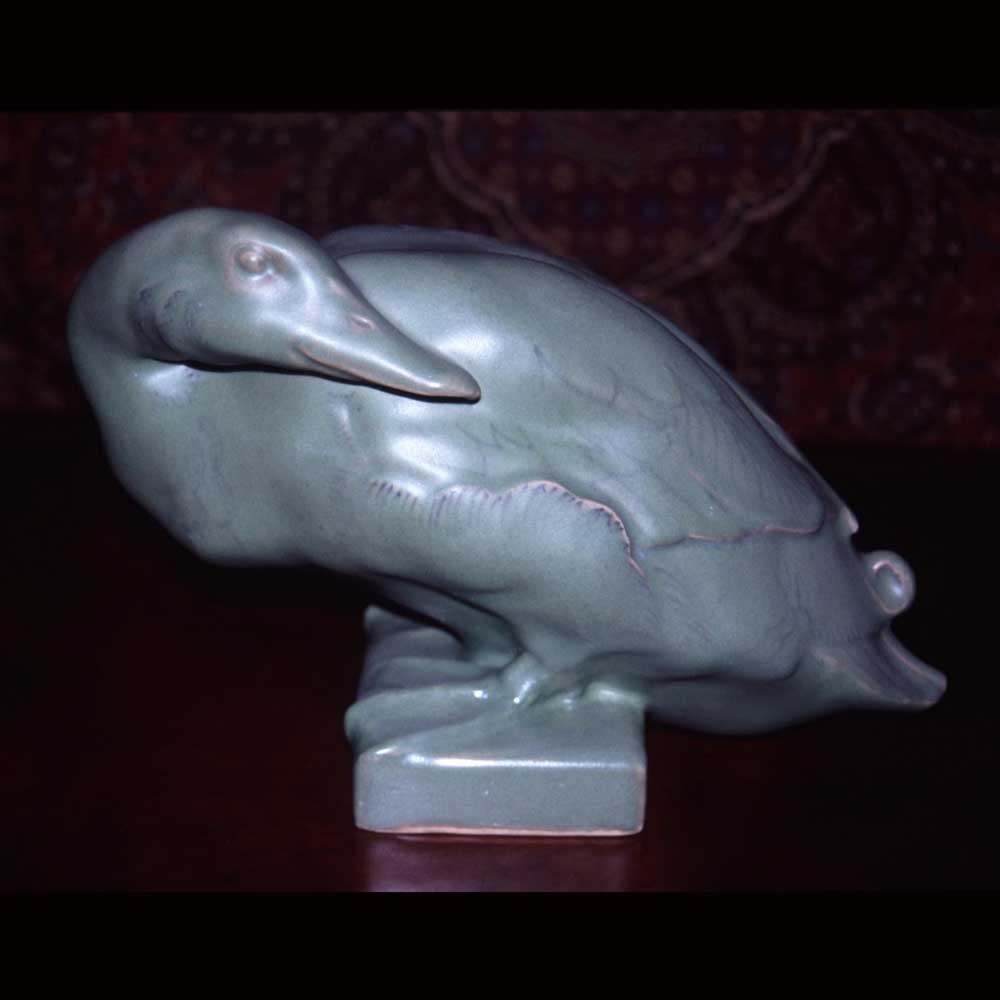
Doulton Lambeth Drake

Lachesis
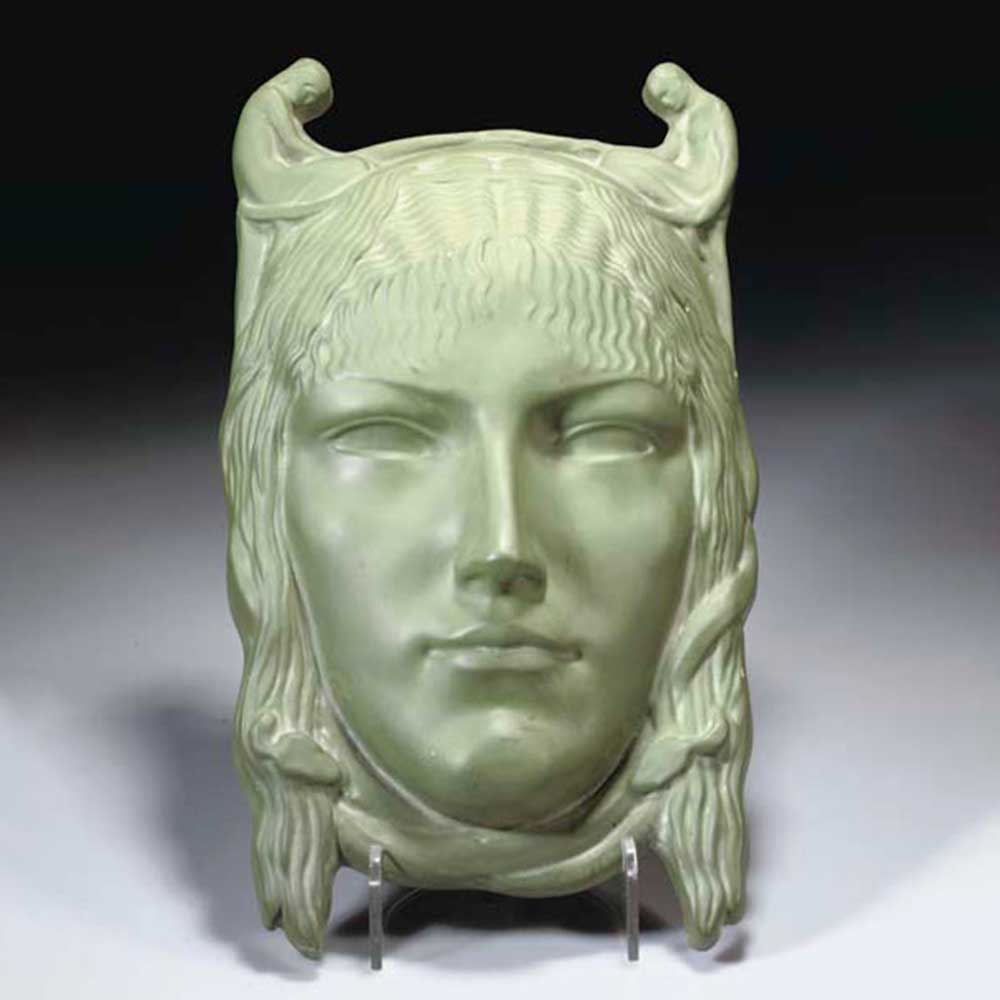
Royal Doulton Fate

Royal Doulton Fate

Royal Doulton Agnes
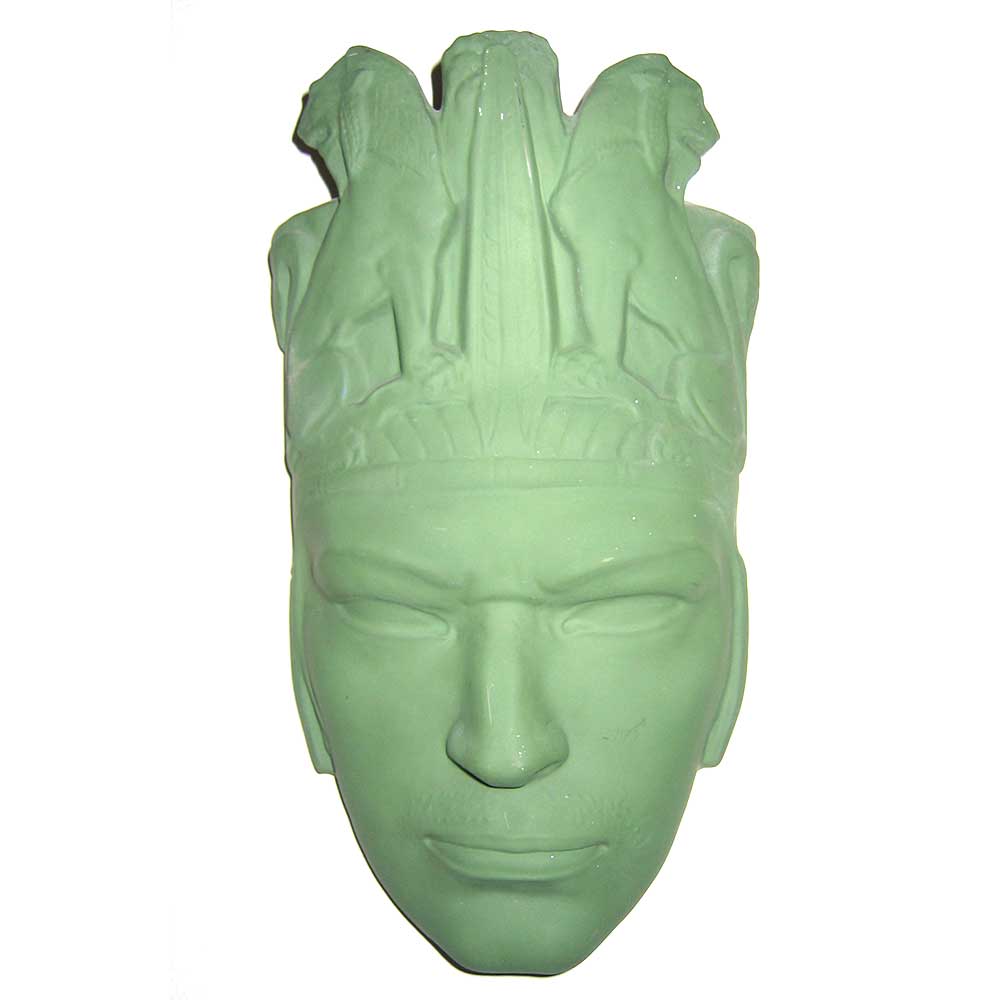
Royal Doulton Lion of the East

Beethoven Bust

Wedgwood Syren

Wedgwood Boy on Shell
